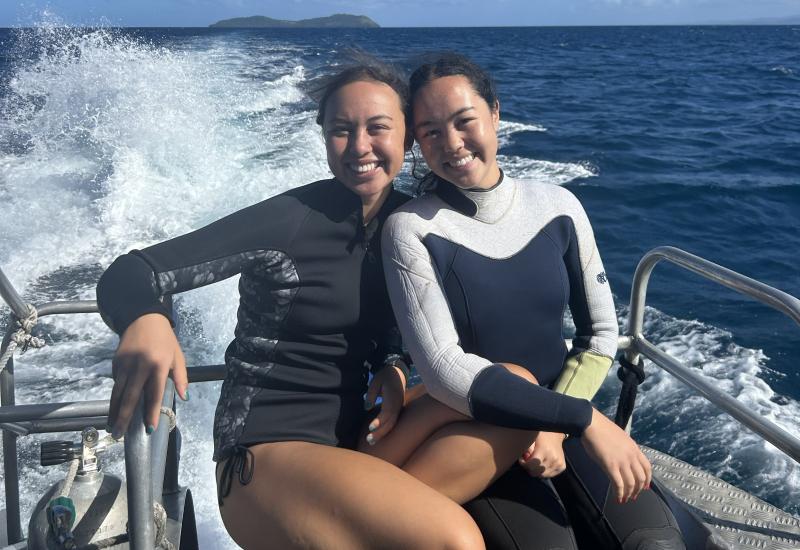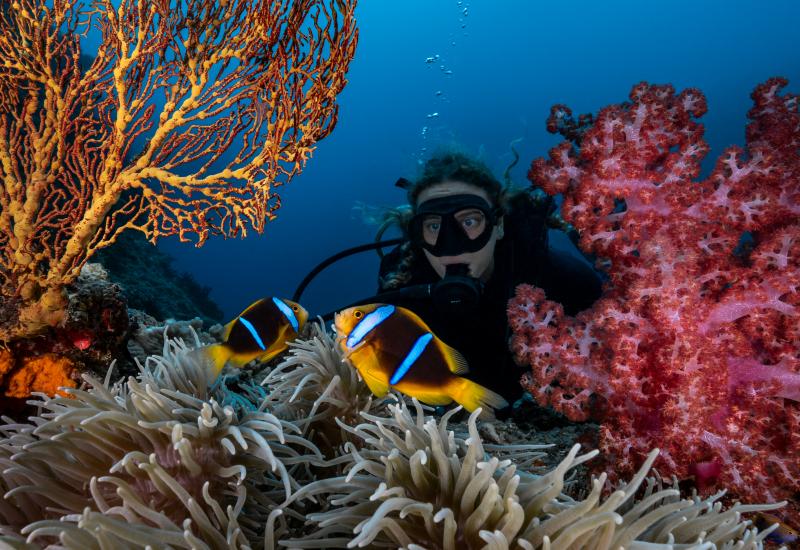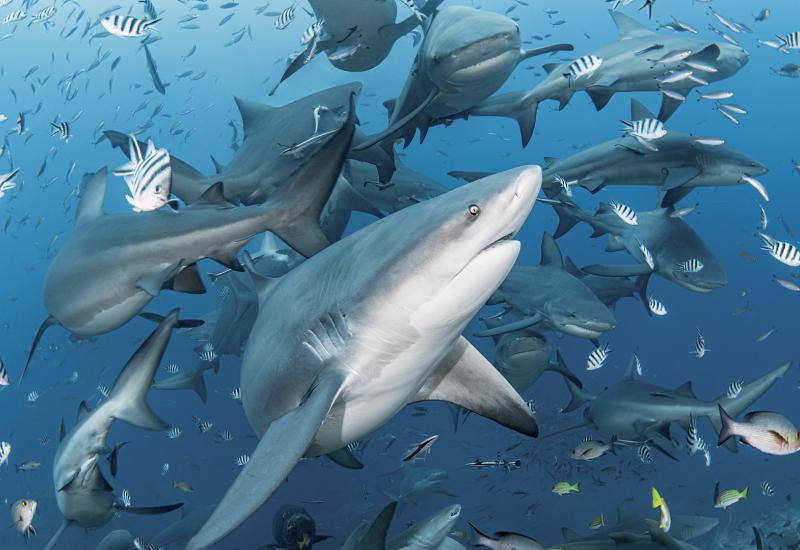What It’s Like to Dive a Virgin Reef

Shutterstock.com/Ignacio Moya CoronadoYasawa Island, Fiji.
While backpacking through the remote northernmost Fijian Yasawas, I wandered up to a small dive shack looking for work. They already had one divemaster on the will-dive-for-food (aka room, board and Fiji Bitter) plan, so they regretfully declined. As a consolation, they offered to let me ride along the following day. I happily accepted and rose with the chickens, admiring the distant coast of the island where they filmed Blue Lagoon as I walked up the beach.
Like most Fijian operations, the boat was a flat skiff anchored a healthy distance out to survive the dramatic tides. We donned our gear on the beach, spare tank hoisted over one shoulder, balancing fins and dry bags filled with water, Vegemite sandwiches and mangoes and carefully made our way to the boat around urchins and coral about 100 meters away. The five of us (the entire dive staff and the single paying diver) settled onto the wooden slat seats and started comparing past dives. Two things became quickly apparent: everyone on the boat was an experienced divemaster or instructor and the local crew decided it was their duty to blow all of our previous “best dives ever” out of the water as a matter of Fijian pride.
They huddled, chatting in rapid Fijian and came to a broad-smiled consensus. The captain pointed the nose of the skiff away from land to open ocean. We’d be diving a virgin reef. We bumped along for 40 minutes, scanning the clear aqua waters for a promising chunk of coral to explore. Satisfied with a long ridge drifting down to blue, we backrolled into one of the most unique dives in my 3,000+ experience.

Shutterstock.com/Angela N PerrymanReef with small, colorful fish in the Yasawa Islands in Fiji.
We started deep down the purple fan and hot pink soft coral-covered ridge. Colors sprang to life under the sweep of a dive light, as we took in the bittersweet vision of what a truly healthy and untouched reef could be. Within minutes, a fascinating phenomenon emerged. Bubbles are foreign to any sea creature, but for critters who have never encountered divers, they proved irresistible. Eels’ mouths paused in caution, before abandoning their crevices and swimming out for a closer look. The dive was spent re-enacting Snow White as curious fish and sea life left their nooks and crannies to perch on our shoulder and flutter around our masks. Brilliant deep pink squarespot anthias, sea goldies with their ‘running mascara’ purple streaks, and crimson flame angels swarmed in a chaotic rainbow. If we didn’t find Nemo, we certainly met his cousins and even spotted an ornate ghost pipefish.
We rose for our safety stop, our dive leader smugly smiling, knowing he knocked our fin-socks off. Then his eyes widened. I looked over my shoulder into the blue at a large oceanic whitetip shark. The brilliant white patches on rounded fins were unmistakable, though I’d only seen one on a documentary about sharks with the biggest body count under their fins. We subconsciously moved together, all eyes trained on the creature as it began to make large lazy circles around us, punctuated by breathtakingly sudden speeding darts in and then away at the last moment. We exhaled, checking our computers and calculating odds of getting bent prohibitively far from a hyperbaric chamber. A moment of false hope, his curiosity hadn’t disappeared as he turned back in a slightly tighter, slow circle. We were officially being stalked.
We hooked elbows to make a solid large circle group, rethinking our life choices. We were in this beautiful creature’s house as he cat-and-moused us. The impossibly slow circles grew tighter, until a single beep from a computer echoed our salvation. It was the most torturously slow surfacing of our lives, fins in sync, following by an unholy scramble onto the skiff. We rode back to land, humbled, awed and silent. Vegemite sandwiches forgotten.










